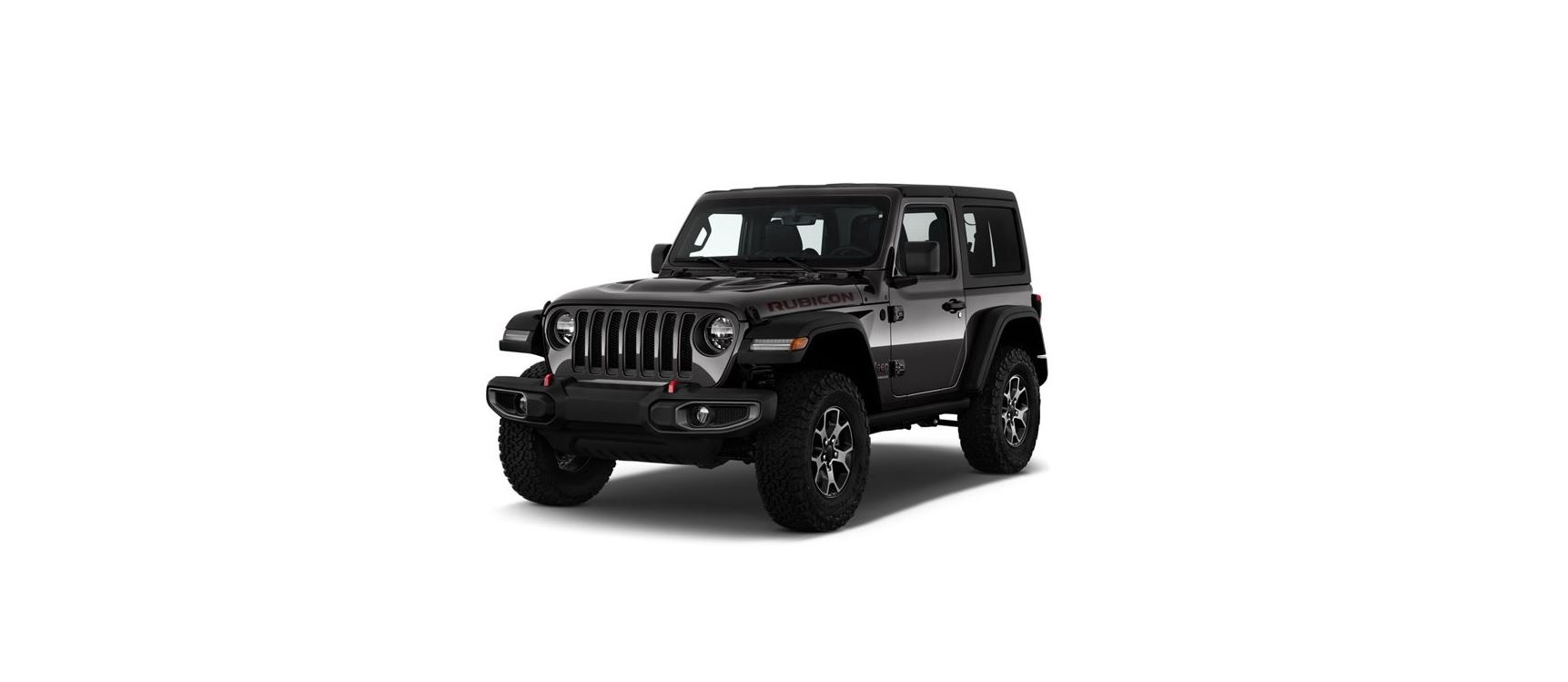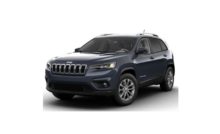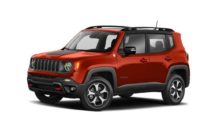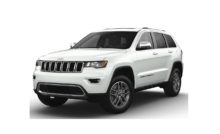2022 Jeep Wrangler Four-Wheel Drive Operation User Manual




2022 Jeep Wrangler Four-Wheel Drive Operation




WARNING
Failure to engage a transfer case position completely can cause transfer case damage or loss of power and vehicle control. You could have a collision. Do not drive the vehicle unless the transfer case is fully engaged.
FOUR-POSITION TRANSFER CASE — IF EQUIPPED
Four-Wheel Drive Gear Selector
The transfer case provides four positions:
- 2H — Two-Wheel Drive High Range
- 4H — Four-Wheel Drive High Range
- N (Neutral)
- 4L — Four-Wheel Drive Low Range
For additional information on the appropriate use of each transfer case position, see the following:
2H
Two-Wheel Drive High Range — This range is for normal street and highway driving on dry, hard-surfaced roads.
4H
Four-Wheel Drive High Range — This range maximizes torque to the front driveshaft, forcing the front and rear wheels to rotate at the same speed. This range provides additional traction for loose, slippery road surfaces only.
N (Neutral)
N (Neutral) — This range disengages both the front and rear driveshafts from the powertrain. To be used for flat towing behind another vehicle page 198.
WARNING
You or others could be injured or killed if you leave the vehicle unattended with the transfer case in the (N) Neutral position without first fully engaging the parking brake. The transfer case (N) Neutral position disengages both the front and rear driveshafts from the powertrain and will allow the vehicle to roll, even if the automatic transmission is in PARK (or the manual transmission is in gear). The parking brake should always be applied when the driver is not in the vehicle.
4L
- Four-Wheel Drive Low Range — This range provides the low-speed four-wheel drive. It maximizes torque to the front driveshaft, forcing the front and rear wheels to rotate at the same speed. This range provides additional traction and maximum pulling power for loose, slippery road surfaces only. Do not exceed 25 mph (40 km/h).
- The transfer case is intended to be driven in the 2H position for normal street and highway conditions, such as hard-surfaced roads.
- In the event that additional traction is required, the transfer case 4H and 4L positions can be used to lock the front and rear driveshafts together, forcing the front and rear wheels to rotate at the same speed.
- The 4H and 4L positions are intended for loose, slippery road surfaces only and not intended for normal driving. Driving in the 4H and 4L positions on hard-surfaced roads will cause increased tire wear and damage to the driveline components. For further information on shifting into 4H or 4L page 158.
- The instrument cluster alerts the driver that the vehicle is in four-wheel drive, and the front and rear driveshafts are locked together. The light will illuminate when the transfer case is shifted into the 4H position.
- When operating your vehicle in 4L, the engine speed will be approximately three times (four times for Rubicon models) that of the 2H or 4H positions
- at a given road speed. Take care, not to Overspeed the engine.
- Proper operation of four-wheel-drive vehicles depends on tires of equal size, type, and circumference on each wheel. Any difference will adversely affect shifting and cause damage to the transfer case.
- Because four-wheel drive provides improved traction, there is a tendency to exceed safe turning and stopping speeds. Do not go faster than road conditions permit.
Shifting Procedures
2H TO 4H OR 4H TO 2H
Shifting between 2H and 4H can be made with the vehicle stopped or in motion. The preferred shifting speed would be 0 to 45 mph (72 km/h). With the vehicle in motion, the transfer case will engage/disengage faster if you momentarily release the accelerator pedal after completing the shift. Do not accelerate while shifting the transfer case. Apply a constant force when shifting the transfer case lever.
NOTE
- Do not attempt to make a shift while only the front or rear wheels are spinning. The front and rear driveshaft speeds must be equal for the shift to take place. Shifting while only the front or rear wheels are spinning can cause damage to the transfer case.
- Delayed shifts out of four-wheel drive may be experienced due to uneven tire wear, low or uneven tire pressures, excessive vehicle loading, or cold temperatures.
- The shifting effort will increase with speed, this is normal.
During cold weather, you may experience increased effort in shifting until the transfer case fluid warms up. This is normal.
4H TO 4L OR 4L TO 4H
With the vehicle rolling at 1 to 3 mph (2 to 5 km/h), shift an automatic transmission into NEUTRAL (N), or press the clutch pedal on a manual transmission. While the vehicle is coasting at 1 to 3 mph (2 to 5 km/h), shift the transfer case lever firmly to the desired position. Do not pause with the transfer case in N (Neutral). Once the shift is completed, place the automatic transmission into DRIVE or release the clutch pedal on a manual transmission.
NOTE
Shifting into or out of 4L is possible with the vehicle completely stopped; however, difficulty may occur due to the mating teeth not being properly aligned. Several attempts may be required for clutch teeth alignment and shift completion to occur. The preferred method is with the vehicle rolling at 1 to 3 mph (2 to 5 km/h). Avoid attempting to engage or disengage 4L with the vehicle moving faster than 1 to 3 mph (2 to 5 km/h).
During cold weather, you may experience increased effort in shifting until the transfer case fluid warms up. This is normal.
WARNING
Failure to engage a transfer case position completely can cause transfer case damage or loss of power and vehicle control. You could have a collision. Do not drive the vehicle unless the transfer case is fully engaged.
FIVE-POSITION TRANSFER CASE — IF EQUIPPED
The transfer case provides five-mode positions:
- 2H — Two-Wheel Drive High Range
- 4H AUTO — Four-Wheel Drive Auto High Range
- 4H PART-TIME — Four-Wheel Drive Part Time High Range
- N (Neutral)
- 4L — Four-Wheel Drive Low Range
For additional information on the appropriate use of each transfer case mode position, see the following:
2H
Two-Wheel Drive High Range — This range is for normal street and highway driving on dry, hard-surfaced roads.
4H AUTO
Four-Wheel Drive Auto High Range — This range sends power to the front wheels. The four-wheel-drive system will be automatically engaged when the vehicle senses a loss of traction. Additional traction for varying road conditions.
4H PART-TIME
Four-Wheel Drive Part-Time High Range — This range maximizes torque to the front driveshaft, forcing the front and rear wheels to rotate at the same speed. This range provides additional traction for loose, slippery road surfaces only.
N (Neutral)
Neutral — This range disengages both the front and rear driveshafts from the powertrain. To be used for flat towing behind another vehicle page 198.
WARNING
You or others could be injured or killed if you leave the vehicle unattended with the transfer case in the (N) Neutral position without first fully engaging the parking brake. The transfer case (N) Neutral position disengages both the front and rear driveshafts from the powertrain and will allow the vehicle to roll, even if the automatic transmission is in PARK (or the manual transmission is in gear). The parking brake should always be applied when the driver is not in the vehicle.
4L
- Four-Wheel Drive Low Range — This range provides the low-speed four-wheel drive. It maximizes torque to the front driveshaft, forcing the front and rear wheels to rotate at the same speed. This range provides additional traction and maximum pulling power for loose, slippery road surfaces only. Do not exceed 25 mph (40 km/h). This transfer case is designed to be driven in the two-wheel-drive position (2H) or four-wheel drive position (4H AUTO) for normal street and highway conditions on dry hard-surfaced roads. Driving the vehicle in 2H will have greater fuel economy benefits as the front axle is not engaged in 2H.
- For variable driving conditions, the 4H AUTO mode can be used. In this mode, the front axle is engaged, but the vehicle’s power is sent to the rear wheels. Four-wheel drive will be automatically engaged when
- the vehicle senses a loss of traction. Because the front axle is engaged, this mode will result in lower fuel economy than the 2H mode.
- In the event that additional traction is required, the transfer case 4H and 4L positions can be used to lock the front and rear driveshafts together, forcing the front and rear wheels to rotate at the same speed.
- The 4H and 4L positions are intended for loose, slippery road surfaces only and not intended for normal driving. Driving in the 4H and 4L positions on hard-surfaced roads will cause increased tire wear and damage to the driveline components. For further information on shifting into 4H or 4L page 160.
- The instrument cluster alerts the driver that the vehicle is in four-wheel drive, and the front and rear driveshafts are locked together. The light will illuminate when the transfer case is shifted into the 4H position.
- When operating your vehicle in 4L, the engine speed will be approximately three times (four times for Rubicon models) that of the 2H or 4H positions at a given road speed. Take care not to overspeed the engine.
- Proper operation of four-wheel-drive vehicles depends on tires of equal size, type, and circumference on each wheel. Any difference will adversely affect shifting and cause damage to the transfer case.
- Because four-wheel drive provides improved traction, there is a tendency to exceed safe turning and stopping speeds. Do not go faster than road conditions permit.
Shifting Procedures
2H TO 4H AUTO OR 4H AUTO TO 2H
Shifting between 2H and 4H AUTO can be made with the vehicle stopped or in motion. The preferred shifting speed would be 0 to 45 mph (72 km/h). With the vehicle in motion, the transfer case will engage/disengage faster if you momentarily release the accelerator pedal after completing the shift. Do not accelerate while shifting the transfer case. Apply a constant force when shifting the transfer case lever.
2H/4H AUTO TO 4H PART-TIME OR 4H PART-TIME TO 2H/4H AUTO
Shifting between 2H/4H AUTO to 4H PART TIME can be made with the vehicle stopped or in motion. The preferred shifting speed would be 0 to 45 mph (72 km/h). With the vehicle in motion, the transfer case will engage/disengage faster if you momentarily release the accelerator pedal after completing the shift. Do not accelerate while shifting the transfer case. Apply a constant force when shifting the transfer case lever.
NOTE
- Do not attempt to make a shift while only the front or rear wheels are spinning. The front and rear driveshaft speeds must be equal for the shift to take place. Shifting while only the front or rear wheels are spinning can cause damage to the transfer case.
- Delayed shifts out of four-wheel drive may be experienced due to uneven tire wear, low or uneven tire pressures, excessive vehicle loading, or cold temperatures.
- The shifting effort will increase with speed, this is normal.
During cold weather, you may experience increased effort in shifting until the transfer case fluid warms up. This is normal.
4H PART-TIME/4H AUTO TO 4L OR 4L TO 4H PART TIME/4H AUTO
With the vehicle rolling at 1 to 3 mph (2 to 5 km/h), shift an automatic transmission into NEUTRAL (N), or press the clutch pedal on a manual transmission. While the vehicle is coasting at 1 to 3 mph (2 to 5 km/h), shift the transfer case lever firmly to the desired position. Do not pause with the transfer case in N (Neutral). Once the shift is completed, place the automatic transmission into DRIVE or release the clutch pedal on a manual transmission.
NOTE: Shifting into or out of 4L is possible with the vehicle completely stopped; however, difficulty may occur due to the mating teeth not being properly aligned. Several attempts may be required for clutch teeth alignment and shift completion to occur. The preferred method is with the vehicle rolling at 1 to 3 mph (2 to 5 km/h). Avoid attempting to engage or disengage 4L with the vehicle moving faster than 1 to 3 mph (2 to 5 km/h).
WARNING
Failure to engage a transfer case position completely can cause transfer case damage or loss of power and vehicle control. You could have a collision. Do not drive the vehicle unless the transfer case is fully engaged.
TRAC-LOK REAR AXLE — IF EQUIPPED
- The Trac-Lok rear axle provides a constant driving force to both rear wheels and reduces wheel spin caused by the loss of traction at one driving wheel. If traction differs between the two rear wheels, the differential automatically proportions the usable torque by providing more torque to the wheel that has traction.
- Trac-Lok is especially helpful during slippery driving conditions. With both rear wheels on a slippery surface, a slight application of the accelerator will supply maximum traction.
WARNING
On vehicles equipped with a limited-slip differential, never run the engine with one rear wheel off the ground. The vehicle may drive through the rear wheel remaining on the ground and cause you to lose control of your vehicle.
AXLE LOCK (TRU-LOK) FRONT AND REAR — IF EQUIPPED
The AXLE LOCK switch is located on the instrument panel (to the right of the steering column).
- Ignition in the RUN position, vehicle in 4L.
- Vehicle speed should be 10 mph (16 km/h) or less.
- Both right and left wheels on the axle are at the same speed.
To activate the system, push the AXLE LOCK switch down to lock the rear axle only (the “REAR ONLY” will illuminate), and push the switch up to lock the front axle and rear axle (the “FRONT + REAR” will illuminate). When the rear axle is locked, pushing the bottom of the switch again will lock or unlock the front axle.
NOTE
- The indicator lights will flash until the axles are fully locked or unlocked.
- To unlock the axles, push the AXLE LOCK OFF button.
- Axle Lock will disengage if the vehicle is taken out of 4L, or the ignition switch is turned to the OFF position.
- The Axle Lock disengages at speeds above 30 mph (48 km/h), and will automatically re-lock once the vehicle speed is less than 10 mph (16 km/h).
AXLE LOCK (TRU-LOK) REAR ONLY —IF EQUIPPED
The rear axle may be locked in 4H if the proper conditions are met.
WARNING
This mode is intended for off-highway or off-road use only and should not be used on any public roadways.
The AXLE LOCK switch is located on the instrument panel (to the right of the steering column).
This feature will only activate when the following conditions are met:
- Ignition in the RUN position, vehicle in 4H.
- The vehicle must be in Off Road+ active page 163.
- The vehicle must be in ESC “Full Off” mode page 278.
- The vehicle must not be active in a high wheel slip or tight cornering condition.
To activate the system, push the AXLE LOCK switch down to lock the rear axle only (“REAR ONLY” will illuminate). To unlock the rear axle, push the AXLE LOCK OFF button. Axle Lock will disengage if the vehicle is taken out of 4H, Off Road+ is turned off by the driver, ESC “Full Off” is exited, or the ignition switch is turned to the OFF position.
NOTE
- The indicator lights will flash until the rear axle is fully locked or unlocked.
- The rear Axle Lock system may temporarily disengage the rear locker under some conditions.
- If this occurs, the rear axle will automatically re-lock as soon as the system allows.
ELECTRONIC SWAY BAR DISCONNECT —IF EQUIPPED
Your vehicle may be equipped with an electronic disconnecting stabilizer/sway bar. This system allows greater front suspension travel in off-road situations. This system is controlled by the SWAY BAR switch located on the instrument panel (to the right of the steering column).
SWAY BAR Switch
Push the SWAY BAR switch to activate the system. Push the switch again to deactivate the system. The Sway Bar Indicator Light (located in the instrument cluster) will illuminate when the bar is disconnected. The Sway Bar Indicator Light will flash during activation transition, or when activation conditions are not met. The stabilizer/sway bar should remain in on-road mode during normal driving conditions.
WARNING
Ensure the stabilizer/sway bar is reconnected before driving on hard-surfaced roads or at speeds above 18 mph (29 km/h); a disconnected stabilizer/sway bar may contribute to the loss of vehicle control, which could result in serious injury. Under certain circumstances, the front stabilizer/sway bar enhances vehicle stability and assists with vehicle control. The system monitor’s vehicle speed and will attempt to reconnect the stabilizer/sway bar at speeds over 18 mph (29 km/h). This is indicated by a flashing or solid Sway Bar Indicator Light. Once a vehicle speed is reduced below 14 mph (22 km/h), the system will once again attempt to return to off-road mode.
To disconnect the stabilizer/sway bar, shift to either 4H or 4L and push the SWAY BAR switch to obtain the off-road position page 157. The Sway Bar Indicator Light will flash until the stabilizer/sway bar has been fully disconnected.
NOTE
The stabilizer/sway bar may be torque locked due to left and right suspension height differences. This condition is due to driving surface differences or vehicle loading. In order for the stabilizer/sway bar to disconnect/reconnect, the right and left halves of the bar must be aligned. This alignment may require that the vehicle be driven onto the level ground or rocked from side to side.
To return to on-road mode, push the SWAY BAR switch again.
WARNING
If the stabilizer/sway bar will not return to on-road mode, the Sway Bar Indicator Light will flash in the instrument cluster and vehicle stability may be reduced. Do not attempt to drive the vehicle over 18 mph (29 km/h). Driving faster than 18 mph (29 km/h) with a disconnected stabilizer/sway bar may contribute to the loss of vehicle control, which could result in serious injury.
OFF ROAD+ — IF EQUIPPED
When activated, Off Road+ is designed to improve the user experience when using specific Off-Road driving modes. To activate Off Road+, push the OFF ROAD+ switch in the switch bank. The vehicle’s performance will improve depending on which Four-Wheel Drive (4WD) mode is activated.
NOTE
Off Road+ will not function in 2H mode. If the button is pushed while in 2H mode, the cluster display will show the message “Off Road+ Unavailable Shift to 4WD”.
When Off Road+ is active, the following features will activate:
- The Off Road+ telltale will illuminate in the instrument cluster display
- A mode-specific message will display the instrument cluster display
- Off-Road Pages will launch on the radio head unit if selected in radio settings
- The Off-Road Camera will launch if selected in radio settings
Once in Off Road+, the vehicle will begin to behave in different ways depending on the 4WD mode in use. The following enhancements will occur when using Off Road+.
4L
- Engine/Transmission Calibration: Rock Crawl and controllability focus, change in shifting schedule when rock crawling, pedal calibration shifted to de-gain and low range, operates at lower vehicle speeds
- Traction Control: Aggressive brake lock differential tuning at a slower speed or FIRST gear
- Off Road+: Recall the last status between ignition cycles
4H
- Engine/Transmission Calibration: Improved sand performance/wheel slip focus, change in shift schedule for sport mode, the pedal calibration set to aggressive, operates at elevated vehicle speeds
- Traction Control: High wheel speed, slip tuning brake lock differential with no engine management
- Electronic Stability Control: ESC Off with unlimited speed
- Off Road+: Will default to OFF between ignition cycles Cruise Control and Adaptive Cruise Control (ACC) will not function while using Off Road+. A dedicated cluster message will display indicating this if either feature is activated while in Off Road+. If the ESC OFF button is pushed while in Off Road+, the following will occur on the vehicle:
- A push of the ESC OFF Button: Traction Control will turn off, but Stability Control will remain active.
- Hold the ESC OFF Button for five seconds: Traction Control and Stability Control will turn off.
Recent Posts
VW Jetta Engine Fuse Box Diagram
Access the comprehensive 2010-2018 VW Jetta Passenger Fuse Box Diagram to troubleshoot electrical issues effectively.…
VW Jetta Passenger Fuse Box Diagram
Explore the comprehensive VW Jetta Passenger Fuse Box Diagram to troubleshoot electrical issues effectively. Understand…
2023 Ford F-150 Lightning Fuse Box Diagram
Under Hood Fuse Box Location Remove the front luggage compartment cover. Under Hood Fuse Box…
2022 Kawasaki NINJA H2 SX SE Brake Lever Adjuster Owner’s Manual
2022 Kawasaki NINJA H2 SX SE Brake Lever Adjuster Owner's Manual NOTICE Only adjust the front…
2023 Land Rover Range Rover Evoque Exiting The Vehicle Owners Manual
2023 Land Rover Range Rover Evoque Exiting The Vehicle SINGLE LOCKING WARNING Before exiting the…
2023 Land Rover Range Rover Evoque Front Seats Owners Manual
2023 Land Rover Range Rover Evoque Front Seats FRONT SEAT SAFETY Make sure to read…


